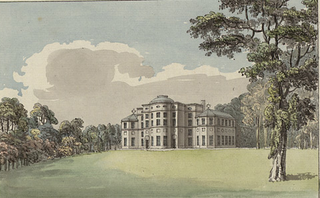Special Operations Executive (SOE) was a British organisation formed in 1940 to conduct espionage, sabotage and reconnaissance in German-occupied Europe and to aid local resistance movements during World War II.

Forgery is a white-collar crime that generally consists of the false making or material alteration of a legal instrument with the specific intent to defraud. Tampering with a certain legal instrument may be forbidden by law in some jurisdictions but such an offense is not related to forgery unless the tampered legal instrument was actually used in the course of the crime to defraud another person or entity. Copies, studio replicas, and reproductions are not considered forgeries, though they may later become forgeries through knowing and willful misrepresentations.
The SOE F Section timeline lists the significant events in the history of Section F of the Special Operations Executive. The Special Operations Executive (SOE) was a clandestine organization of the United Kingdom during World War II. The purpose of SOE was to conduct espionage, sabotage, and reconnaissance in countries occupied by the Axis powers. SOE agents allied themselves with resistance groups and supplied them with weapons and equipment parachuted in from England. Section F was responsible for many of SOE's activities in France which was occupied by Nazi Germany.

Konrad Paul Kujau was a German illustrator and forger. He became famous in 1983 as the creator of the so-called Hitler Diaries, for which he received DM 2.5 million from a journalist, Gerd Heidemann, who in turn sold it for DM 9.3 million to the magazine Stern, resulting in a net profit of DM 6.8 million for Heidemann. The forgery resulted in a four-and-half-year prison sentence for Kujau.

Art forgery is the creation and sale of works of art which are intentionally falsely credited to other, usually more famous artists. Art forgery can be extremely lucrative, but modern dating and analysis techniques have made the identification of forged artwork much simpler.
John Drewe is a British purveyor of art forgeries who commissioned artist John Myatt to paint them. Drewe earned about £1.8 million executing these art crimes.

The Silent Unseen were elite special-operations paratroopers of the Polish Army in exile, created in Great Britain during World War II to operate in occupied Poland.

In general, philatelic fakes and forgeries are labels that look like postage stamps but have been produced to deceive or defraud. Learning to identify these can be a challenging branch of philately.

Baron Hill is a country estate in Beaumaris, Anglesey, Wales. The ruined Baron Hill House and the associated Baron Hill Park were established in 1618 by Sir Richard Bulkeley as the family seat of the influential Bulkeley family. Parts of the park are a site of special scientific interest.
Shaun Greenhalgh is a British artist and former art forger. Over a seventeen-year period, between 1989 and 2006, he produced a large number of forgeries. With the assistance of his brother and elderly parents, who fronted the sales side of the operation, he successfully sold his fakes internationally to museums, auction houses, and private buyers, accruing nearly £1 million.

Stanisław Jankowski was an SOE agent and Polish resistance fighter during World War II, and an architect thereafter, who played a prominent role in the post-war reconstruction of Warsaw.

Gaynes Hall is a Grade II* listed Georgian mansion set in 20 acres (81,000 m2) of parkland in the heart of the Cambridgeshire countryside. Located in the village of Perry, Huntingdon the building was requisitioned during the Second World War and was also the residence of Sir Oliver Cromwell for 21 years.
Adolfo Kaminsky was an Argentine-born member of the French Resistance, specializing in the forgery of identity documents (IDs), and photographer. During World War II, he forged papers that saved the lives of more than 14,000 Jews. He later assisted Jewish immigration to the British Mandate for Palestine and then forged identity documents for the Algerian National Liberation Front and French draft dodgers during the Algerian War (1954–62). He forged papers for thirty years for different activist groups, mainly national liberation fronts, without ever requiring payment.
The following outline is provided as an overview and topical guide to forgery:

Wall Hall, originally known as Aldenham Abbey, is a country house at Aldenham in Hertfordshire, England. The main house and several ancillary buildings are Grade II listed. The gardens and parkland are also on the Register of Historic Parks and Gardens of Special Historic Interest in England.

Marie Christine Chilver, known as Christine,, also known by the codename Agent Fifi, was a British secret agent in World War II. Originally recruited after escaping the Nazis and helping a British airman return to England, she worked for the Special Operations Executive (SOE) assessing and testing the security awareness of trainee secret agents.
Alice Cohn (1914–2000) was a German-Jewish graphic artist and master forger for the Dutch resistance during World War II.

Aston House was a prominent 17th-century residence with large parkland situated opposite the parish church in Aston, Hertfordshire in southern England. The house was demolished in 1961 by the Stevenage New Town Development Corporation after occupying it as its initial HQ. The site was developed and named Yeomans Drive in memory of Arthur Yeomans, the last owner in 1939 when it was requisitioned by the War Office. The adjoining parkland became Stevenage Golf and Conference Centre in April 1980.

Abraham Rajchmann was a Jewish Polish career criminal and revolutionary militant, expert forger and engraver who worked for Soviet intelligence from 1934. Through his contact with Comintern official Léon Grossvogel, he was recruited into a Soviet espionage group initially in Belgium that was being run by Leopold Trepper, that would later be called the Red Orchestra by the Abwehr, during the Nazi period. Rajchmann used a number of aliases to disguise his identity, including Adam Blanssi, Arthur Roussel, Katenmann, Fabrikant and Max.














